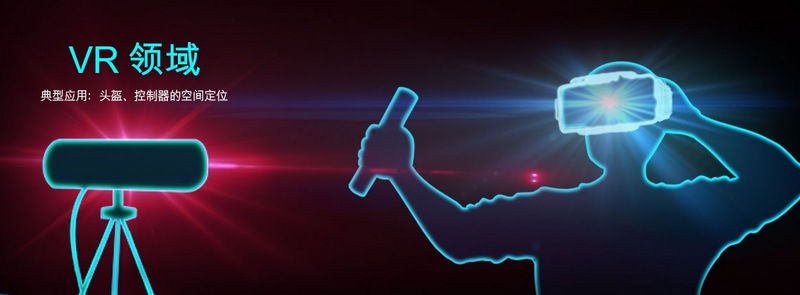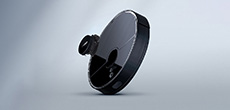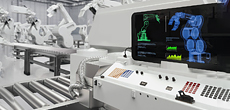Fierce market competition based on optical positioning

With the popularization of smart TVs, VR, AR, robotics, drones, etc., the importance of space positioning and identification systems has begun to highlight. Players who want to "divide cakes" have become increasingly increased, and many companies have also won the favor of capital. The Camsense we recently contacted, established in 2014, hoping to provide consumer electronics -based high -cost space positioning and identification system based on infrared electronic products.
Camsense has developed a set of algorithms based on infrared optical space positioning and recognition, and provided in the form of Camsense® SDK. The founder Christopher said that compared to similar algorithms on the market, Camsense® SDK can achieve the Asian pixel -level spatial positioning resolution, which is one magnitude higher than other companies in the industry (about 10 times), which means that low prices are used at low prices The hardware of the hardware can achieve the performance that can be achieved by high -priced hardware, thereby reducing the cost of hardware.
Based on this set of algorithms, Camsense has launched two high -precision positioning cameras, including Camsense® M1, which is suitable for TV control, video games, robotics indoor navigation, Camsense® M2 for VR and industrial robots. Among them, M1 is adopted by multiple smart television companies as accessories, and M2 is expected to be commercially used in the fourth quarter of 2016.
At present, Camsense is also developing two second -generation products. Among them, the two -eyed camera Camsense® S1 can be regarded as an upgrade of M1. The size is smaller. In addition to robots and drones, it can also be used on mobile devices. It is expected that 2017 is expected to be. Commercial use in the second quarter of the year; the first quarter of 2018 may launch a smaller Camsense® S1 Plus. At present, there are already many companies that do optical positioning and tracking at home and abroad. Camsense has chosen to cut in from the field of smart television. Based on its own algorithm and hardware, it cooperates with Skyworth in October 2014 to launch positioning for TV shooting games in October 2014 to launch positioning for TV shooting games. Equipment -game light guns, compared to the low volume, low cost, and delay of the traditional light. The reason why I chose to cut in from this field, Camsense calculated an account. China TV's sales are about 45 million units each year. In recent years, the proportion of smart TVs has increased to more than 70%. It is expected to reach 90% in 2017, which means that about 40 million television bases are each year. If it can reach a 1% conversion rate in the future, it means that there are more than 40 million income each year. The official said that the sales volume of the first generation of products within half a year had reached 32000 units; in May last year, two partners of LeTV and Hisense were added to launch second -generation products, and the total order was more than 63,000 units; The game pistol has received orders worth over 7 million yuan. At the same time, it is being connected and adapted with TCL and Storm. It is expected that sales will reach 50,000 units this year.
The business of smart TV accessories seems simple, but there is also a problem to solve. One is to get more support and adaptation of content manufacturers, and the other is to create barriers in fierce competition.
For game manufacturers, the first consideration of cooperation can still bring users or income to themselves. It is difficult to put a sales volume of 100,000 for well -known game manufacturers. Christopher told 36Kr that on the one hand, TV manufacturers have certain appeal to game manufacturers. In addition to cooperating with TV manufacturers in business aspects, Camsense also received LeTV’s support in capital; on the other hand, Camsense® SDK's docking work It is not complicated. The entire process only requires only one technician for 7 days.
Browse the website of TV manufacturers, you will find that many companies are now being cut into this market. The more well -known includes Xiao Bawang and Obi Zhongguang. Christopher said that compared to these competitors, Camsense's product cost can be within 100 yuan, and the final C -terminal price can be about 300 yuan, which is lower than technology competition; Competitive products, Camsense's technology has advantages in terms of stability, accuracy, and delay.
As the VR industry begins, optical positioning and tracking have become an important implementation of VR interaction. Although, in the long run, Inside-Out Tracking will be the mainstream, the Outside-in Tracking scheme represented by Camsense in recent years is easier to realize, especially in the field of PC VR head display and the tracking of mobile VR handles, it has significant advantages.
Camsense said that the company has made progress in terms of technology, especially in terms of average displacement error, average displacement, and average rotation angle jitter. To. During the 2017 CES period, there will be a VR head display equipped with Camsense technology. The VR header of a well -known Internet company may also be followed by Camsense technology. In addition, HTC Wang Xuehong also visited Camsense this year.
In addition, Camsense has recently signed a cooperation agreement with Shanghai University to cooperate with the visual positioning tracking system for industrial robots, which aims to improve the absolute accuracy of robots and can be used for flexible automation and wiring of large precision parts. At present, potential users include high -end manufacturing companies such as Chinese commercial aircraft companies. The accuracy of the system requires a positioning accuracy of 0.2mm in a large measurement space.
Camsense has now formed about 30 teams. Christopher is a master's tutor of Tsinghua University. It is mainly based on the research and development and technical management experience of computer vision and image processing. He has previously been in Chicago Bell Labs, China Mobile's Zhuowang Technology, Taishan Online, etc. Enterprise office. Chief Scientist Dai Qionghai is a professor, blog director, and deputy department director of the Department of Automation of Tsinghua University. In 2012, the first prize winner of the National Invention, 973 Chief Scientist, Yangtze River Scholars, and Outstanding Youth Fund winners. The main research areas are: 3D image processing, 3D Image display, light field calculation.
At the beginning of the establishment of Camsense, 5 million yuan of angel financing of the famous Internet angel investor was obtained. In June 2016, it received 10 million yuan Pre-A round financing from Oriental Fuhai and LeTV. At present, the company is seeking a new round of financing, which is mainly used for technology research and development, team building and market expansion.










